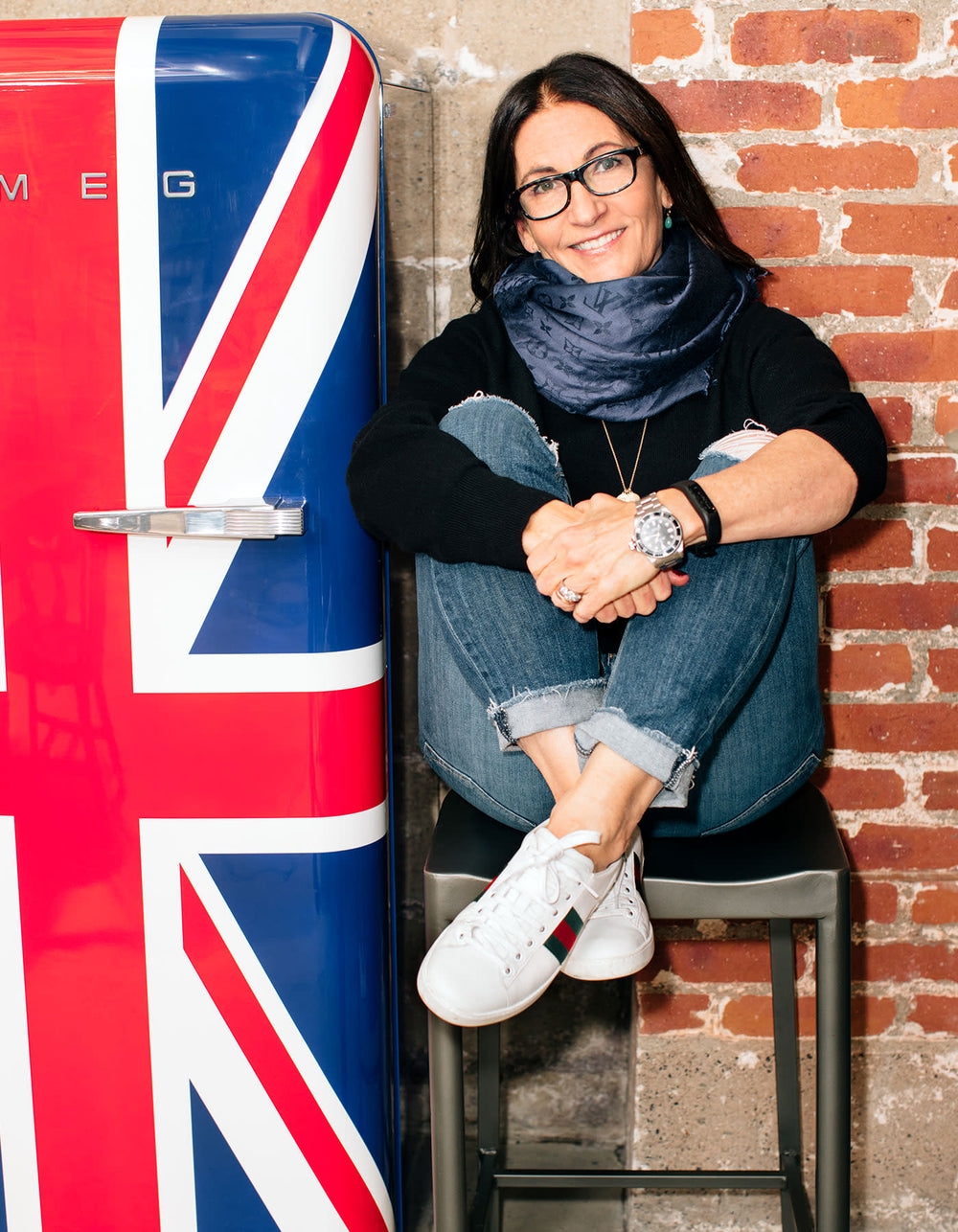Diary / Beauty / Aug 7, 2023
How Should I Apply Bronzer for a Natural Look?
Written by: Piper Gray
Photography by: Ben Ritter & Jon Paterson

Bronzer is an essential tool in our makeup kit for how easily it transforms your complexion into a radiant, sun-kissed canvas. It accentuates the warmth of our skin, mimicking a natural tan, to achieve a fresh, healthy glow.
The key to a perfectly bronzed look lies not just in the technique but also in understanding your unique skin tone, undertones, and which products suit your skin best.
Read on for a comprehensive guide on how to expertly apply bronzer for a flawless natural look.
Using Your Skin Tone and Undertones to Choose a Bronzer
Bronzer isn’t a one-shade-fits-all product. It's essential to consider both your skin tone and undertones to choose the bronzer shade that flatters you best.
Skin tones range from fair to dark, while undertones can be categorized into warm (yellow or golden), cool (pink or blue), and neutral. If you have fair skin, bronzer shades with rose or peach undertones can help achieve a natural, back-from-vacation look. For those with medium skin, bronzer with golden undertones would work well, while for dark skin, a deep terra-cotta bronzer can add a beautiful warmth.
While bronzing imparts a radiant, sun-kissed glow, it is different from contouring. Bronzing focuses on the areas where the sun naturally hits your face, like your forehead, bridge of your nose, cheekbones, and chin. Contouring, on the other hand, is a technique that sculpts and defines your face's shape by creating shadows in specific areas.
How to Choose the Right Bronzer for Your Skin Type
When it comes to bronzers, they come in different formulas, such as powder, cream, and liquid. It’s helpful to know your skin type before deciding which is best for you.
If you have oily skin, a matte powder bronzer can help absorb excess oil and reduce shine, while a cream or liquid bronzer can hydrate dry skin and add a dewy finish. The Bronzer is a silky powder—here’s a quick tip: take our quiz to find the best shade for you—while our Gel Bronzer offers a lightweight, sheer glow—both are buildable and suit all skin types.
In terms of finish, matte bronzers are a good option if you want something subtle, while a shimmer oil, like Jones Road’s Shimmer Face Oil in Midas or Bronze, ups the radiance—on its own or atop your bronzer.
But when it comes down to it, the best bronzer, regardless of formula, looks natural on your skin in the daylight. Indoor lighting may call for a heavier hand with your bronzer, while outdoor daylight typically requires a more subtle application to avoid a too-bronzed look.

Choosing the Best Bronzer for Your Skin Tone and Type
Your skin tone and type significantly influence which bronzer will work best for you. Here's a quick breakdown:
-Fair Skin: If you have fair skin, look for a bronzer with peach or honey undertones. (Avoid anything too dark or orange, as it can look chalky or artificial.) Matte powders work well with fair skin as they go on sheer and buildable.
-Medium Skin: For medium skin tones, a rose or gold-based bronzer will enhance your natural sun-kissed glow. You can experiment with both matte and shimmery finishes.
-Dark Skin: Those with dark skin should go for a deep bronze or tawny bronzer with warm undertones. Rich, shimmery bronzers can also suit darker skin tones.
When it comes to skin types, here are some tips:
-Dry Skin: Cream or liquid bronzers work well for dry skin as they provide extra hydration and offer a more dewy look.
-Oily Skin: Powder bronzers—particularly matte ones—are perfect for oily skin. They help control excess shine and last longer.
Bronzer Brush vs. Powder Brush: Which Is Best for You?
Selecting the right tools will affect how the bronzer appears on your complexion. If you’re using a powder formula, then you can choose between a bronzer brush and a powder brush. For liquid, gel, or cream blushes, a brush suited for bronzer will work well as will your fingertips.
A bronzer brush, like our own Bronzer Brush, usually has dense bristles so you can sweep easily across the cheeks or warm up the skin with an all-over application.
A powder brush may be rounder and fluffier, perfect for diffusing the product. This works well for creating a light, natural sun-kissed look, as our Blush Brush and Face Powder do.
If you’re using Gel Bronzer, The Everything Brush or The Skin Brush will work beautifully, too.

Step-by-Step Tutorial: How To Properly Apply Bronzer
Now that you've got a grip on the basics, let's dive into how to apply bronzer.
1. Clean and moisturize: Start with a prepped face, and then apply your foundation and concealer. This creates a smooth canvas for the bronzer.
2. Load up your tools: Swirl your brush in the bronzer, ensuring the bristles are evenly coated, and shake off any extra powder. Or, if you’re going with a liquid or gel bronzer, lightly scoop or squeeze a small amount of product onto your fingertips.
3. Begin with the forehead: Start from the top of your forehead, blending the bronzer into your hairline. This warms up the perimeter of your face, where the sun naturally tans your skin.
4. Sweep across the cheekbones: Apply the bronzer in the shape of the number “3”, starting from your forehead, hitting the high points of your face: the cheekbones and jawline. Use a light hand and build up the bronzer gradually.
5. Blend into the jawline: Continue from your cheekbones down to your jawline, again using light, circular motions. This ensures there isn’t a stark difference in the colors of your face and neck.
6. Remember the nose and chin: Lightly dab your brush on the bridge of your nose and the chin—areas where the sun would naturally hit.
7. Blend: The key to natural bronzing lies in blending to ensure there are no harsh lines or patchy areas.
8. Review and adjust: Check your complexion in natural light, adding more bronzer or blending further if needed. Don't be afraid to combine bronzer products, either. Layering a powder bronzer over a cream or liquid bronzer can add long-lasting dimension.
How To Apply Your Bronzer for Different Makeup Looks
Bronzer is a surprisingly versatile product. A couple of things to keep in mind: To add an extra dimension to your bronzed look, consider using a highlighter on the high points of your face, such as the cheekbones, bridge of the nose, and Cupid's bow. This will enhance your natural glow and give your skin a luminous finish.
Your bronzer should also adapt to the changing seasons. During summer, when the skin is naturally a bit more tanned, you might want to go a shade darker with your bronzer. And in winter, stick to a lighter shade that won't contrast too much with your fairer skin.
Here are a few ways to adapt your bronzer application for different makeup looks:
Daytime Look
For a casual look during the day, opt for a matte bronzer. This will help you achieve a natural, sun-kissed glow that looks as if you just left the beach. Use a light hand when applying the product and build up to your desired look.
For an extra boost of soft-focus moisture, apply our award-winning Miracle Balm as an all-over skin tint, blush, bronzer, or highlighter. This versatile balm will give you a gorgeous glow and a foolproof, no-makeup makeup look.
Night Out
You can reach for a shimmery bronzer to add some sophistication and glamor to your evening makeup look. A little goes a long way, though, so take care to not overapply. Our silky Shimmer Face Oil is perfect for special occasions but subtle enough to incorporate into your daily routines as well.
Bronzer as Eyeshadow
Another trick is to use your powder bronzer as an eyeshadow. (Liquid, cream, or gel bronzers may gather in the creases of your eyelids or smear if they aren’t specifically formulated for use around the eyes, so a powder is the way to go.) Simply sweep the product over your eyelids using a brush like our Eye Fluffy Brush to add some definition for a daily look or as part of your smokey eye.
The Bottom Line
Remember, bronzer is not about changing your look entirely but enhancing your complexion and emphasizing your natural radiance. Applying bronzer is a skill that requires practice, but once you've mastered the techniques and understood the importance of choosing the right bronzer shade for your skin type and undertone, you'll be well on your way to achieving that coveted sun-kissed glow.













































 Miracle Balm
Miracle Balm
 Just Enough Tinted Moisturizer
Just Enough Tinted Moisturizer
 What The Foundation
What The Foundation








